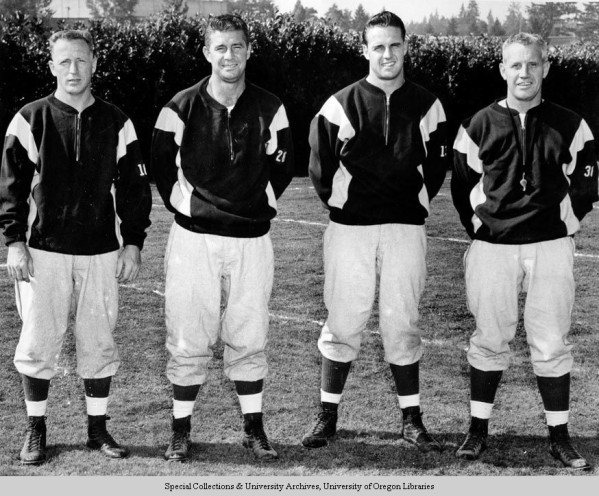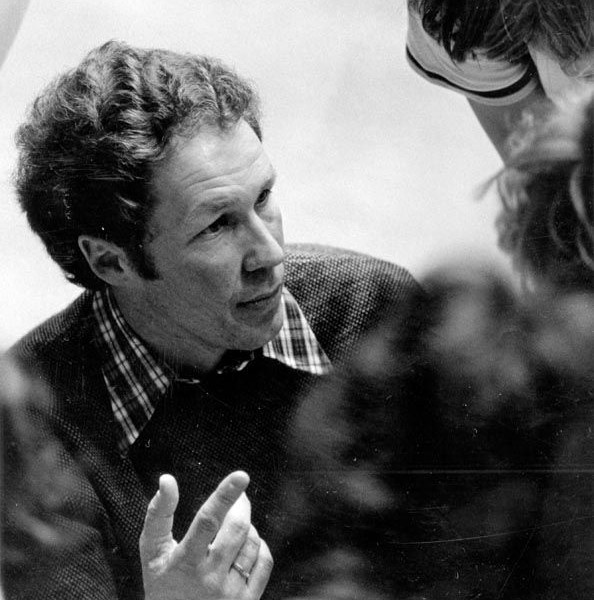Positioning for Power
As the Athletic Department began to establish an infrastructure for intercollegiate sports on campus, the success of the teams escalated. In 1949, the football team played in the Cotton Bowl against Southern Methodist University, marking its first post-season appearance since 1920. That same year, Bill Bowerman took over coaching duties for the track and field team. With the arrival of Bowerman and the new successes in the competitive arena, changes in coaching duties inevitably followed.
Recruiting on the Rise
An increased focus on recruiting fueled the momentum in the second-half of the century. The football program aimed to become a competitor in NCAA Division-I. In order to make this possible, coaches increased their focus on recruiting the best prospective players possible. Creating a winning atmosphere on and off of the field was of vital importance to this process. More assistant coaches were added to the roster and the head coach became a target for increased scrutiny, as producing winning results on the field became more of a priority.
As Oregon began to make a name for itself in track and field, prize athletes sought the school out. Although Bowerman and his staff did concentrate on securing a strong team, they did not need to focus on recruiting as much as other squads-reputation alone was igniting interest.
 Fighting for Focus
Fighting for Focus
During the 1960s and 1970s, women’s coaches became more critical to the growth of women’s sports. Unlike the coaches for men’s sports, women’s coaches were still required to juggle several roles while leading teams. As the men’s coaching positions had transitioned into more full-time roles, solely concentrating on one sport, women’s coaches continued to teach while managing several sports teams.
In 1975, even more power was given to the men’s coaches. Faced with crippling deficits in the budget, the Athletic Department granted coaches the right to solicit their own donations and funding for their respective sports. Although this gave coaches more flexibility in controlling their team’s resources, it also raised issues between teams. Not only were coaches forced to manage their teams, but now they were also fighting for funding from alumni, sponsors, and other sources.
 Catching up to the Crowd
Catching up to the Crowd
The first full-time women’s head coaches came on board in the fall of 1977. Tom Heinonen took over the track and field and cross-country teams and Elwin Heiny oversaw the basketball team. The leadership shift was initiated by Title IX legislation and clearly signified an increased focus on women’s sports.
Up until this time, there was no recruiting or scholarships offered in the women’s program, which kept education the top priority of the college experience for female athletes. However, this soon changed when the women’s program merged with the men’s athletic department in 1977. The first women’s scholarships were offered the following fall.
As funding for women’s programs grew, so did the availability of scholarships. This created increased pressure for coaches to recruit-something that had not yet occurred in women’s sports . Transitioning into the last quarter of the century, Oregon athletics and its coaches, underwent a series of adjustments.